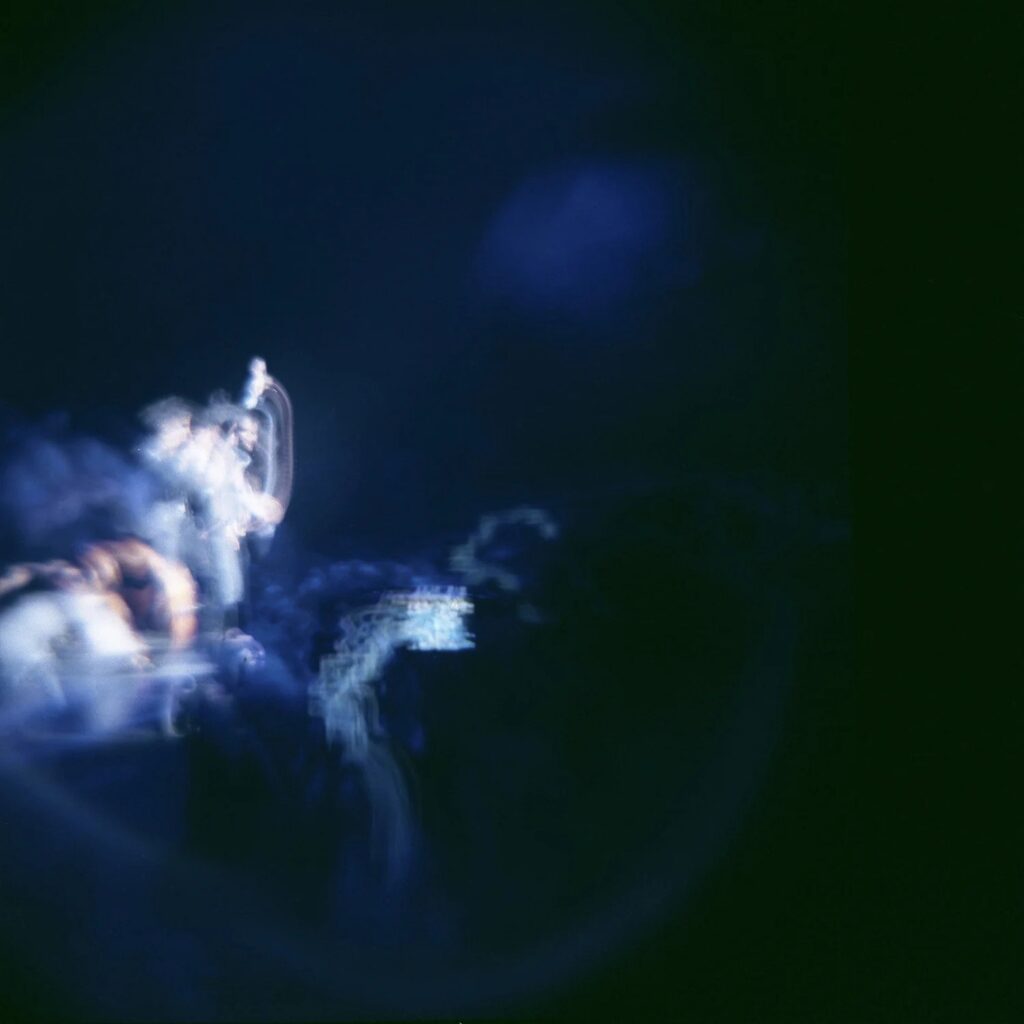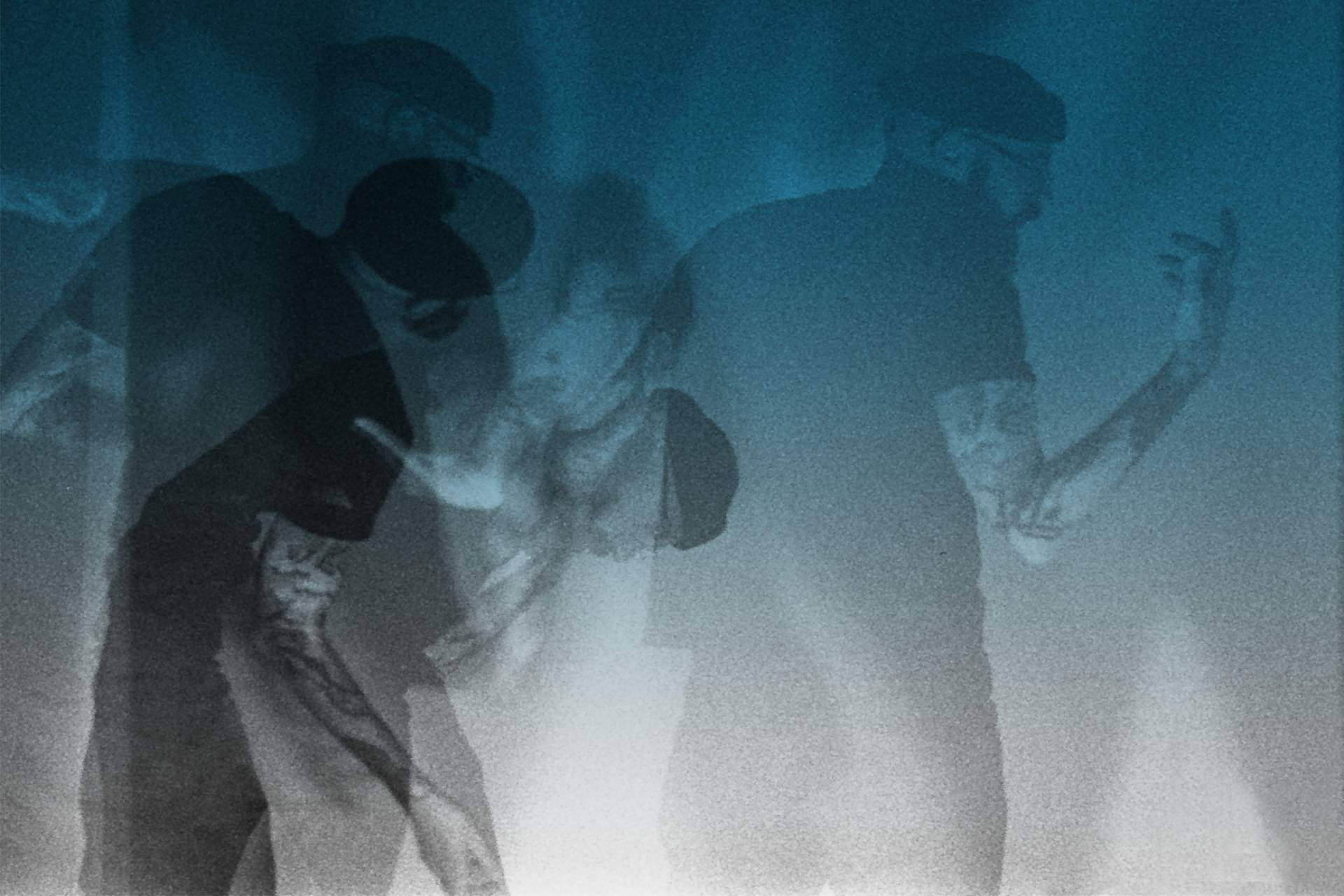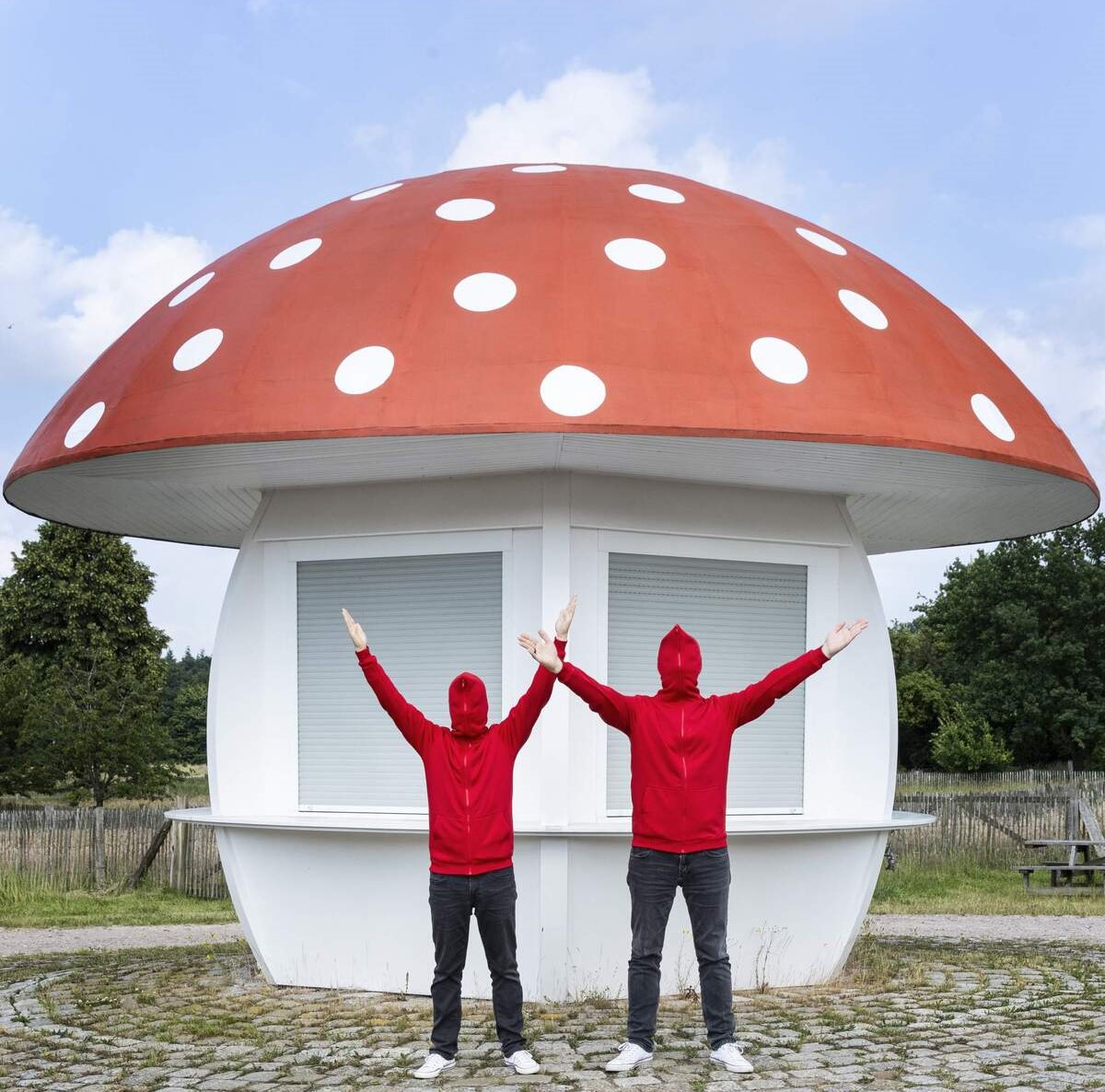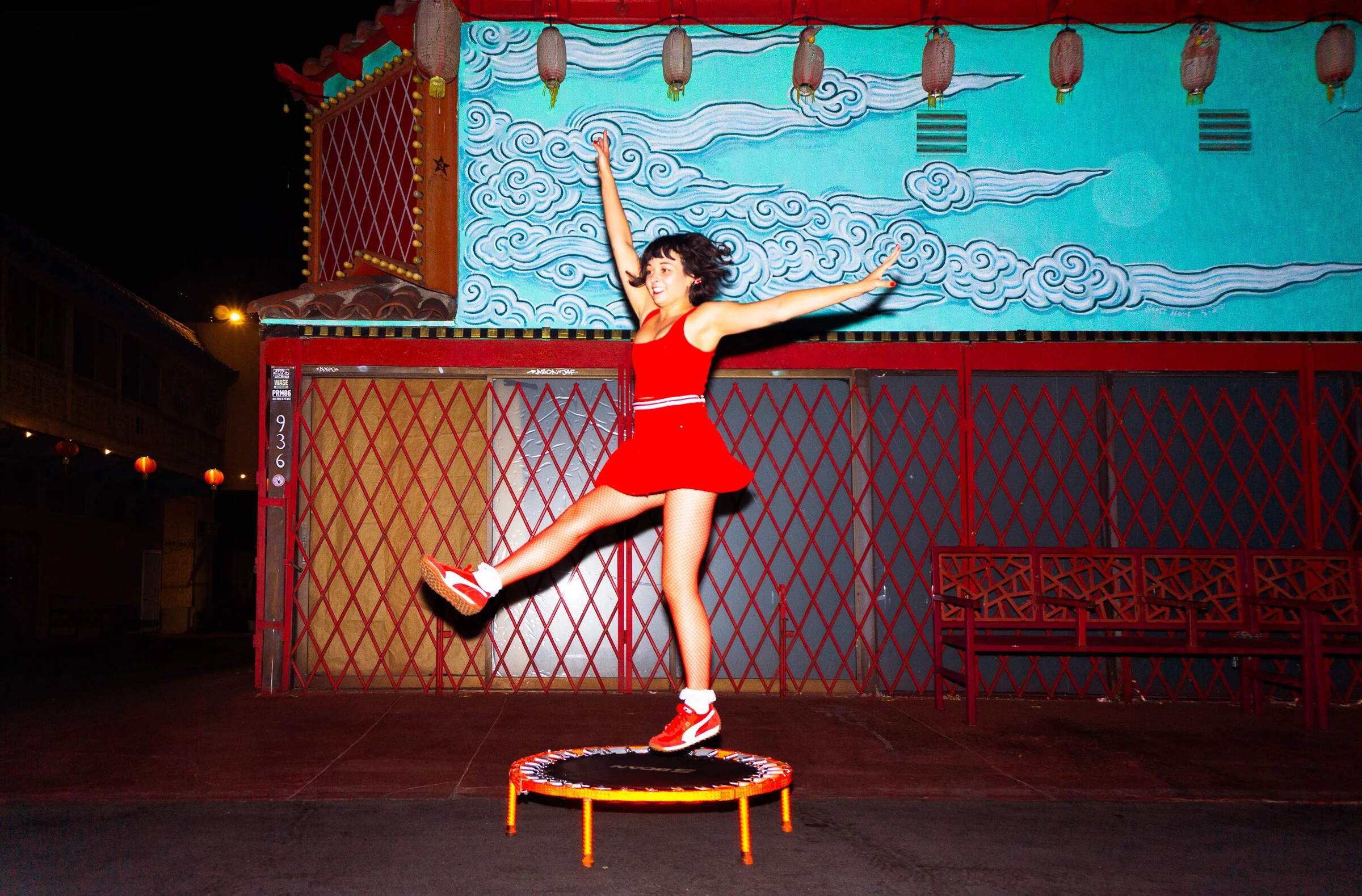‘Jeziorko’ by Frise Lumière | New Album, ‘Ambo’
Exclusive video premiere of ‘Jeziorko’ by Frise Lumière, from the highly anticipated album ‘Ambo,’ dropping October 18th. Available on cassette, CD, vinyl, and all digital platforms via Lumière’s own label, Tapenade Records.
Under a soft, grazing light, Frise Lumière is the deeply personal project of French artist, musician, and composer Ludovic Gerst. Stripping the instrumentation down to just his bass, Gerst creates a unique fusion of harmonic, rhythmic, and percussive soundscapes. His upcoming album ‘Ambo’ showcases this refined approach.
Frise Lumière emerged from collaborative sessions with dancers, artists, and textile designers before evolving into a fully solo project. Gerst’s exploration of his bass’s rhythmic potential, which began with his debut album ‘Bisou Genou,’ continues to deepen in ‘Ambo.’ He expands his use of the prepared bass by integrating broomsticks, mallets, and drumsticks, whether played conventionally or flat on his lap, adding a new dimension to his percussive techniques.
The video for ‘Jeziorko,’ a standout track from ‘Ambo,’ is more than just a visual complement—it acts as an additional instrument, introducing new layers of perspective and harmony to the music. In this five-minute duet of sound and image, scenes from a 1926 Japanese silent film are mixed with Polaroid and analog photos, creating an animated postcard that mirrors the aesthetic of the vinyl release.
‘Jeziorko’ itself, named after the Polish word for “lake,” draws inspiration from the work of ceramic artist Irena Lipska-Zworska, particularly her porcelain and glass mirror piece Jeziorko (1986-1987). The sounds and techniques Gerst employs in the track evoke the delicate, dreamlike quality of porcelain, as if the music were crafted from the material itself, infusing the piece with a sense of fragility and ethereal beauty. Through ‘Ambo,’ Gerst continues to push his craft, fusing sound, art, and experimental technique into a singular, evocative experience.
‘Ambo’ is available for pre-order at the following link!
“I like being able to imagine it in the dialogue between my instrument and myself”
The concept of ‘Ambo’ is fascinating—two beings maintaining their singularity while growing in dialogue. How does this idea translate into your music and interactions with your bass?
Ludovic Gerst: I like this definition, I like being able to imagine it in the dialogue between my instrument and myself. The different work sessions allowed me to see what worked and what didn’t. In a way, the instrument explained to me that this way I wouldn’t get anything usable out of it, or that on the contrary, the idea could work from another angle. The different approaches to playing with drumsticks, mallets, etc., have been a more or less long dialogue depending on the techniques and the time. In the music, I’m trying to strike a balance between rhythm and melody, trying to have a strong rhythm but keep it melodic and harmonic. Both should retain their singularity, even if on some tracks one or the other may take over, but overall there should be a balance.
Your work under Frise Lumière is deeply collaborative, yet it evolved into a solo project. Can you share more about how these collaborations influenced the final sound of your debut album, ‘BisouGenou’?
It started out as a duo between a dancer and myself on bass. At the time, I was still playing with a lot of effects pedals and my various loopers. Working with the different dancers I was lucky enough to collaborate with gave me a different vision, a different way of listening, a different perception. That movement, the body itself, was music, an instrument, a score, even if it was silent. It could be rhythmic, a melody, an emotion in sound, and to give it the space it needed to express itself fully meant leaving space, silence, and not being afraid of that silence. When I started out as a solo instrumentalist, I think I was just scared of that silence, and therefore of putting too much into my composition and my work. That’s how I felt. So I learned to compose and work with him and still fight with him from time to time. After that, I tried to learn to deconstruct myself, to have another exchange with my instrument, and to see it from another angle. I wanted something more raw, to have another language, a sincere communication before finalizing my first album ‘BisouGenou.’
You mentioned that your music comes from “raw textures” and “voiceless chants.” Could you elaborate on how you transform these abstract sounds into the rhythmic and melodic structures we hear in your compositions?
Poetry, poems, and literature, in general, inspire a lot of my work and my music. In fact, the name of this second album refers to a writer by the name of Maria Gabriela Llansol. Words and sentences are fascinating, depending on how they’re pronounced, the tonic or non-tonic stress we impart, the punctuation, and even the silences. We have different melodies and rhythms open to us—at least that’s how I see and hear it. From there, I mix them with the emotions of the moment.
The use of unconventional tools like broomsticks and mallets on your bass is quite unique. How did you discover these methods, and how do they contribute to the acoustic possibilities of your instrument?
By deconstructing my approach to my instrument and trying to move towards something more raw. I asked myself if it wasn’t possible to use my instrument in its entirety while retaining this harmonic, melodic, and rhythmic side. I wanted to extract what I could, whether in terms of resonance, vibration, strings, wood, rhythm, or percussion. My research and work sessions led and pushed me towards elements used for percussion instruments and other everyday elements to obtain the sounds and colors I was looking for.

‘Ambo’ seems to blend the lines between different art forms—music, dance, and even textile design. How do these interdisciplinary elements shape your creative process?
These different art forms are part of our everyday lives. I love discovering, researching, observing, and being enriched by what artists, writers, dancers, and designers have created in the past or present. There’s such a wealth of information and emotion that comes out of it. Different techniques and movements used at different times—all of it feeds me, my creativity, and my work.
When you perform live, especially in unconventional setups like playing your bass flat on your lap, how do you feel the audience’s perception of the music changes?
I play almost in the dark, with just two lights on the floor, so that it’s not the technique that comes to the fore but mainly listening to the music. I’m going to look for what the person in front of me is going to feel, perceive, and hear, rather than putting the emphasis on playing technique. The technique I use is only a secondary element—it’s just what I use and what I want to use to express myself fully.
The evolution from work sessions and experiments to a cohesive solo project must have been an intense creative journey. What were some of the most surprising or challenging aspects of this transition?
Yes, it’s been an intense and interesting journey, full of doubts and questions too. The most surprising aspects are that, in the end, it was all the mistakes in my research sessions that led me to explore certain directions more than others and gave me more freedom on certain points, including improvisation. The aspects that were a bit more restrictive were the doubts and the questioning. When you’re on your own, you have the freedom to make whatever kind of music you want, but knowing when to stop researching and when to fix the tracks on a support was a bit more difficult. It was only when I told myself that the tracks were photos of a present moment, with its qualities and its shortcomings, that something inside me became unblocked.
Your music seems to embody a dialogue between the rhythmic and melodic, almost like a conversation. How do you approach balancing these two aspects during your composition process?
I really like both—the rhythmic and the melodic. I try to harmonize and leave enough room for both, even if at times the rhythmic can take over slightly on certain tracks and vice versa. I try to see it as if they were two distinct instruments so that they can listen to each other, respond to each other, and leave each other the space they need to express themselves. I prefer to minimize my writing on one side or the other rather than increase it, so as not to lose this dialogue.
“Everything comes from raw textures, a noise, a note”—this description is quite evocative. How do you decide which raw elements to develop into a full piece, and which to leave as fragments?
These are the feelings of the moment, of this instant. I work on them, explore what I can extract from them, and depending on what happens after the sessions, I keep what interests me and put aside the rest. Sometimes, when I let a certain period of time go by, I rediscover these fragments, I re-explore them, and sometimes beautiful things emerge.
Given that your first LP was released in 2021 and performed across Europe, how has the reception of BisouGenou influenced your subsequent work and your approach to ‘Ambo’?
Being able to talk to the people I’ve met throughout these shows has enabled me to see and understand the emotions the concert has brought them. What were the highlights of the evening? For example, I’ve met a few people who have told me that they felt the need to get a sound or a song out of their throat on one of my pieces when I played it. I think that’s beautiful. These encounters have been very enriching. So, for this new album, I wanted to delve deeper, enrich certain elements, and open up certain barriers that I had set for myself on the first one.
Speaking about today’s premiere of ‘Jeziorko’… The concept of treating the video as another instrument in the composition is intriguing. How did you approach blending the visual elements with the music to create this harmonious duet?
I thought it was really important that the video and the piece should be in dialogue with each other—a kind of active listening to each other like an interdisciplinary duo, just playing together. Calls that may or may not be answered. Allowing each element the space to express itself, following each other at certain moments and at others just having impulses on the highlights.
Using footage from a 1926 Japanese silent film mixed with Polaroid and analog photos adds a rich, textured layer to the video. What drew you to these specific visual elements, and how do they complement the sound and mood of ‘Jeziorko’?
I like the grain, the rendering, and the dynamics that this film gives off. I wanted to mix it with some of the analog and Polaroid photos I’d taken myself, as well as the sleeve photo by Eloise Gouby, to give it a different pace, a different structure, to bring in color and a different texture to the film. Another era too. The sequences in the film and the photos are 100 years apart. For me, the video brings a different reading of the piece—it gives a look that you might not have imagined at the outset, it brings this visual legend to the piece. It also brings in details, elements that I can’t convey just with the bass. Dance is present in this video, as you can see. I think it’s always present at one point or another in this project.
The track ‘Jeziorko’ is inspired by Irena Lipska-Zworska’s porcelain work. How did the delicate, almost fragile nature of porcelain influence your playing technique and sound design for this piece?
I was lucky enough to discover this work during a visit to a museum in Wrocław (PL) before playing in that city. I fell under the spell of this piece, of this fragile and delicate work, as you say, but also of this work in space. Porcelain elements placed on a mirror as well as porcelain elements suspended by threads (birds), with these threads creating another perspective, another dynamic—a dimension to the work, adding to that the play of light and shadow. Jeziorko is one of the pieces where I play the bass flat on my knees with mallets, but on this one, I play with my mallets on the head of my bass—not only, but for a longer time than I’ve been able to before. I wanted to explore this part a bit more. It’s fragile at the same time as it holds the bass strings in tension or releases them. This work gave me the opportunity to think a bit more about my instrument in its space and its entirety.
What’s next for you?
I’m going to start with the UK tour in November 2024 with Semay Wu. I’m very happy to be able to do this tour with her. After that, I’ve got a few ideas in mind that I’d like to explore—maybe some collaborations, depending on what’s possible for everyone and depending on who we meet. And of course, Frise Lumière, still solo.
Klemen Breznikar
Headline photo: Tania Vila Díaz
Frise Lumière Official Website / Facebook / Instagram
Tapenade Records Official Website / Facebook / Instagram / Bandcamp
‘L’Écume Des Mots’ by Frise Lumière | New Album, ‘Ambo’




